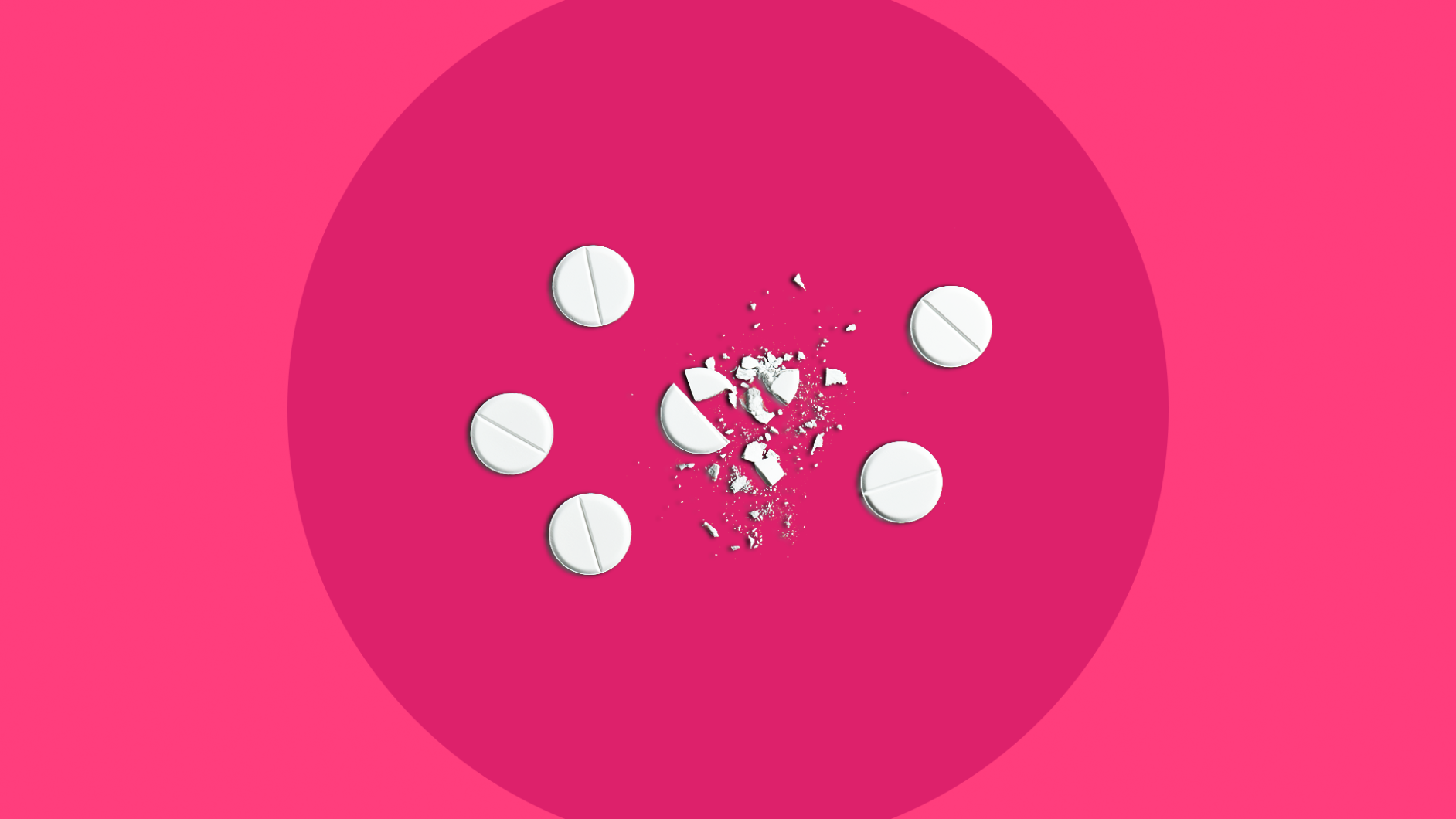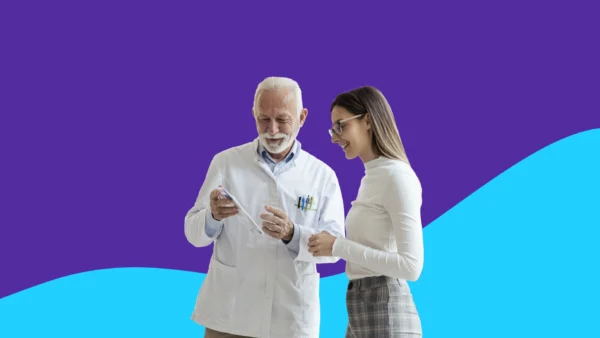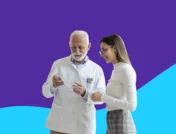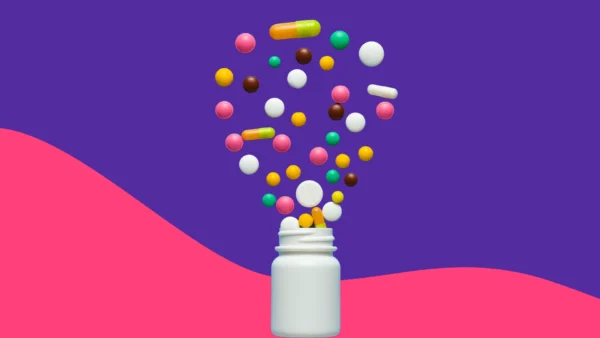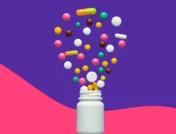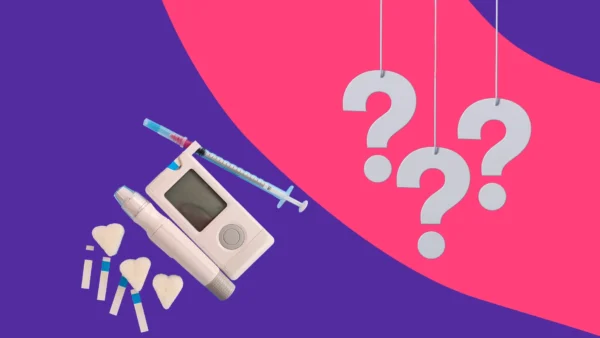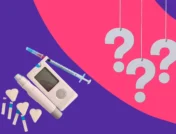Prescription drug abuse is taking a medication prescribed to you in a way other than instructed, or taking someone else’s prescription—whether it’s to help with pain, or to get high.
Almost half of the U.S. population has likely taken a prescription drug in the past 30 days, according to data from the Centers for Disease Control and Prevention (CDC). Meaning, there are a lot of medications circulating in households across the country. Most people take them as directed, but approximately 6% of those 12 and older—some 18 million people—have misused a prescription in the past year, reports the Substance Abuse and Mental Health Services Administration (SAMHSA).
Drug misuse vs abuse?
Misuse of prescription drugs, also called non-medical use, can mean:
- Taking medication in a way other than prescribed
- Taking someone else’s prescription
- Taking medication to get high
It can be innocent, like forgetting to take two doses daily or using another person’s medications for legitimate pain. But, no matter the motivation, misuse can easily become prescription drug abuse, with dangerous consequences.
The three classes of prescription medications that are most commonly misused are opioids, central nervous system depressants, and stimulants. When taken improperly they can lead to addiction, an ER visit, or even overdose and death.
Pharmacists are one line of defense against the prescription drug abuse epidemic.
What is the pharmacist’s responsibility?
As healthcare professionals, the Drug Enforcement Agency (DEA) considers pharmacists responsible for preventing prescription abuse and drug diversion.
“Under federal law, pharmacists have a corresponding responsibility with the prescriber to assure that a controlled substance is for a legitimate medical purpose and in the prescriber’s usual course of professional practice,” explains Tanya Karwaki, Ph.D., lecturer at the University of Washington School of Pharmacy. “Pharmacists share with prescribers the responsibility for assuring a controlled substance prescription is valid before it is dispensed. In addition to complying with federal laws, pharmacists must also comply with the state laws where they are practicing including prescription monitoring program laws.”
It’s a complicated task, that takes a balance of professional judgment and communication with your customers.
Symptoms of prescription drug abuse
There are certain indicators you can watch for to help determine when patients need a prescription to improve quality of life, or are seeking it for less legitimate reasons. “There are multiple red flags that should be considered, some of which include behavioral issues (patient threats, excessive sedation, confusion, intoxication, agitation, multiple opioid controlled substance prescribers, multiple pharmacies); medication specific (large quantities or combined opioids, benzodiazepines, and/or carisoprodol); and unlawful issues (patient admits to sharing with friend or relative, prescriber’s DEA registration or state license is inactive, or the prescription is uniquely misaligned with the providers scope of practice),” says Jeffrey Fudin, Pharm.D., owner and managing editor of PainDr.com.
Patient warning signs
Karwaki says, “Red flags that might alert a pharmacist may include:
- a patient paying cash,
- a patient traveling an unusual distance to fill his or her prescription,
- a patient frequently requesting early refills, and
- unusual patient behaviors such as acting furtively.”
Calling a drug by its street name, for example saying Demmies instead of Demerol, can be another warning sign, according to the National Drug Abuse Summit.
Prescriber or prescription warning signs
Patients aren’t the only culprits. Physicians can facilitate prescription drug abuse, or prescriptions could be forged. “On the prescriber side of the equation, red flags might include prescribers writing for unusually large quantities or other prescribing patterns not typically seen in the surrounding medical community, as well as writing outside their area of specialty,” explains Karwaki.
Additionally, these criteria may indicate illegitimate or forged prescriptions, according to the DEA:
- simultaneous prescriptions for conflicting drugs, like concurrent stimulants and depressants
- multiple prescriptions for similar drugs from the same physician from many different patients
- prescriptions that look too perfect or too neatly written
- prescriptions that appear photocopied
- directions written in full without standard physician abbreviations
- prescriptions written in several handwritings or ink colors
Even if the person filling the prescription exhibits no warning signs, it’s important to scrutinize the prescription itself for signs of fraud or potential for misuse.
What can a pharmacist do?
“A pharmacist suspecting prescription drug abuse must comply with federal and state laws regarding valid prescriptions,” says Karwaki. That can mean taking action. Depending on the specific scenario, consider the following steps.
1. Contact the prescriber.
If you have concerns about the validity or use of a prescription, you have a right and responsibility to get more information. “Pharmacists may need to contact the prescriber and consider refusing to fill a particular prescription,” Karwaki says.
Speaking with a physician can help you determine why a patient needs the medication, and see if it agrees with the customer’s visible symptoms.
2. Contact other pharmacies that have filled prescriptions for the patient.
Perhaps the pharmacy filled a similar prescription from a different physician recently. When your gut is telling you there’s an issue, it can’t hurt to seek more information.
If you discover a pattern of bad prescriptions, or abuse you can contact DEA or state authorities. “If a prescriber is clearly inappropriate and there are public and/or patient safety concerns, the pharmacist has an obligation to report such activity to the state board of narcotics within their jurisdiction, but if a patient is involved, it may be appropriate to file a report with the local police,” Dr. Fudin says.
3. Ask the patient for additional details.
There could be a legitimate reason a patient needs an early refill or pays cash. Having a conversation with your customer can expand your view of the situation, and help rule out potential prescription drug abuse. Consult your state’s prescription drug monitoring program (PDMP) to see if the details your patient describes match the patterns you see in the database.
4. Counsel the patient or refer the patient to addiction treatment.
If your additional investigation points toward prescription drug abuse, you may want to have a discussion about the dangers of prescription drug abuse and next steps. “Pharmacists may also counsel patients and provide a referral or resources about substance abuse,” says Karwaki. Such as:
- SAMSHA’s national helpline: 1-800-662-HELP
- National Institute on Drug Abuse resources
- American Addiction Center resources
5. Refuse to fill the prescription.
There are many reasons you might not be able to fill a prescription—outside of suspected prescription drug abuse. There could be missing information, the physician’s handwriting is illegible, a medication is out of stock, or it might interact dangerously with another prescription.
But if you believe a prescription is being used illegitimately, you may want to consider refusing to fill it—as long as it’s within your rights under state laws.



